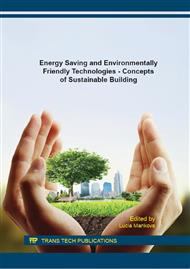p.226
p.235
p.243
p.251
p.259
p.267
p.278
p.288
p.299
Reduction of Environmental Stress through Spatial Arrangements and Different Choices of Body Positions in Indoor Environment
Abstract:
The paper is aimed at analyzes of environmental stressors in indoor environment such as incorrect spatial arrangement or improper setting of limits and less control of own territory /personal space and diminished choice of body positions. There is emphasized the topic of body positions/postures in standard office working environment whereas more choices of body position is a instrument for reduction of stress and increasing of well–being and chance to get new perspectives, approaches and outputs from human resources as well . Nowadays there is a strong need to incorporate a non-formal working style which is also related to non-formal spatial design that can be then occupied by different body positions and using of space in more dynamic way which we can call dynamisation of space. There are also analyzed its main strategies In the paper there are shown theoretical assumptions of relation between work efficiency, creativity and body working position.There is analyzed process of setting methodology for measuring environmental stress through physiological parameters. It shows results of first experimental tests of biometric responses by different working postures by simulation of standard non-industrial working environment. There we chosen 5 working locations – standard set, dynamic seat, stand, perching and reclining. The paper presents results of the pilot test and shows further perspectives of this research.
Info:
Periodical:
Pages:
259-266
Citation:
Online since:
January 2016
Authors:
Price:
Сopyright:
© 2016 Trans Tech Publications Ltd. All Rights Reserved
Share:
Citation:


